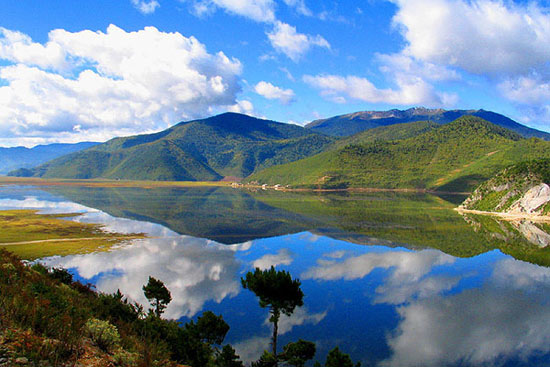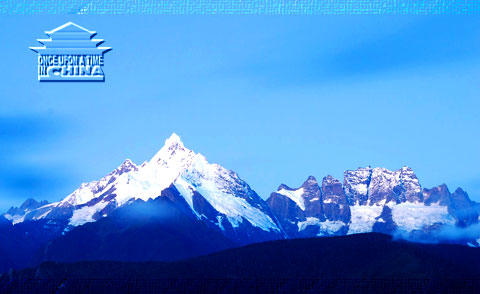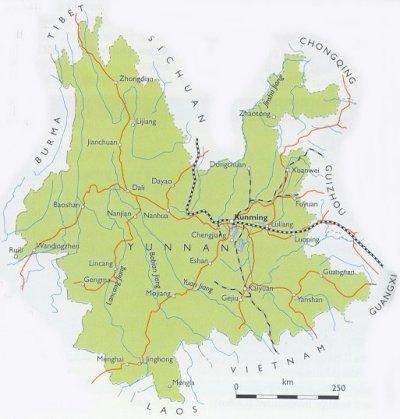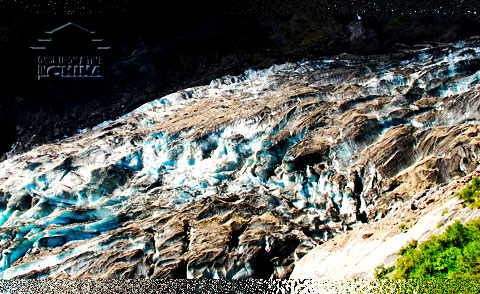Originally called Zhongdian, Shangri-La was renamed in 2001 in a effort to boost tourism. A gateway for travelers into Tibet, the cobblestone-lined old town offers a charming look into local life, which is as close as you can get to experiencing Tibet without actually being there.
A mere four-hour drive from Lijiang and six from Dali, Shangri-La is an excellent hub, conveniently located near attractions like the Songzanlin Monastery, Tiger Leaping Gorge, Pudacuo National Park, Napa Lake, Xiagei Hot Springs and Haba Village.
Despite the rustic, mountain-town atmosphere, Shangri-La has a number of cafes, bars and hotels that cater to foreign visitors, offering mixtures of local and Western food and simple or extravagant amenities.
Archaeological evidence dates human existence in this area back to the Western Zhou Dynasty (1050 - 771 BC). For hundreds of years the area was home to several tribes. During the Han Dynasty (206BC - 220AD) Shangri-La finally made contact with Central China. Today, the town is more Tibetan than Han Chinese with Tibetan architecture, customs and most of the 130,000 population who celebrate New Year according to the Tibetan calendar. As tourism continues to increase, Shangri-La will continue to develop at a rapid rate.
Shangri-La is about 3,300 meters above the sea level. The weather has a tendency to be humid with temperatures varying both at night and during the four seasons. Winters are cold with lots of snow and summers are the rainy season. The best seasons to go are spring and autumn, specifically May to July and September to October. Although visits during Spring Festival are not recommend as temperatures are generally quite low and indoor heating is still somewhat hard to find in Shangri-La.
Shangri-La has a pretty low-key scene. The area is famous for its natural beauty and outdoor attractions rather than a hopping nightlife. However, there are some worthwhile festivals in spring, a few nice pubs and a dance hall where you can check out some Tibetan cultural dance.
Try Shangri-La wine. The bottle has an image of a church on the label and costs 30 RMB. Jovial French missionaries taught the Tibetans many things, one of which was wine making. It seems the religious education didn't stick over the years, but the secular one has paid off with bottles of wine that are actually palatable. Unfortunately, the French failed in teaching cheese and baguette making, but no one can fault them for choosing their battles. If you fancy a drink, the foreign-owned Cow Pub in the old town is the most atmospheric option set in an old Tibetan house. The Raven is cheaper and also foreign-owned but has less atmosphere. The cafes and pubs are a place to pick up information about what is happening in the area, most have notice boards and function as informal travel bureaus. As of yet, there are no clubs in town.
Beside the folk song and dance performed by Diqingzhou Song and Dance Ensemble, the Black-necked Crane Dance Hall is an interesting place to check out. Exhibiting the culture and customs of the Tibetan nationality, the dance hall holds many sing-a-long events and events for different ethnic groups. It also offers laser films, karaoke and a skating rink with entrance fees ranging from RMB 30 to 50.
The Tibetan Horse Racing Festival (May 5th by the Chinese lunar calendar) is held in the nearby pastureland at an altitude is 3288 meters above sea level. During the festival, people go out with other family members, set up tents at the foot of mountain and have picnics. At the beginning of the festival, people will come to the broad grassland to see a parade and performance by the riders from each region. There are various competitions, ie. for speed, agility, jumping, capturing the flags, etc.
Xianzi Festival (May 7th to 9th by the Chinese lunar calendar) take place when the surrounding towns and villages send folk art and literature teams to participate in an art and literature performance and a costume show in Deqin Town. The programs include such activities as Xianzi, Reba and Deqin folk dances, songs of the pledge and general folk customs and national culture.
Dunbar Festival (July 15th by the Chinese lunar year) is defined by everyone dressing in their best clothes to worship the mountain god and chant Yumani Scripture to get rid of bad luck.


















A mere four-hour drive from Lijiang and six from Dali, Shangri-La is an excellent hub, conveniently located near attractions like the Songzanlin Monastery, Tiger Leaping Gorge, Pudacuo National Park, Napa Lake, Xiagei Hot Springs and Haba Village.
Despite the rustic, mountain-town atmosphere, Shangri-La has a number of cafes, bars and hotels that cater to foreign visitors, offering mixtures of local and Western food and simple or extravagant amenities.
- History
Archaeological evidence dates human existence in this area back to the Western Zhou Dynasty (1050 - 771 BC). For hundreds of years the area was home to several tribes. During the Han Dynasty (206BC - 220AD) Shangri-La finally made contact with Central China. Today, the town is more Tibetan than Han Chinese with Tibetan architecture, customs and most of the 130,000 population who celebrate New Year according to the Tibetan calendar. As tourism continues to increase, Shangri-La will continue to develop at a rapid rate.
- Climate
Shangri-La is about 3,300 meters above the sea level. The weather has a tendency to be humid with temperatures varying both at night and during the four seasons. Winters are cold with lots of snow and summers are the rainy season. The best seasons to go are spring and autumn, specifically May to July and September to October. Although visits during Spring Festival are not recommend as temperatures are generally quite low and indoor heating is still somewhat hard to find in Shangri-La.
Entertainment
Shangri-La has a pretty low-key scene. The area is famous for its natural beauty and outdoor attractions rather than a hopping nightlife. However, there are some worthwhile festivals in spring, a few nice pubs and a dance hall where you can check out some Tibetan cultural dance.
- Bars & Clubs
Try Shangri-La wine. The bottle has an image of a church on the label and costs 30 RMB. Jovial French missionaries taught the Tibetans many things, one of which was wine making. It seems the religious education didn't stick over the years, but the secular one has paid off with bottles of wine that are actually palatable. Unfortunately, the French failed in teaching cheese and baguette making, but no one can fault them for choosing their battles. If you fancy a drink, the foreign-owned Cow Pub in the old town is the most atmospheric option set in an old Tibetan house. The Raven is cheaper and also foreign-owned but has less atmosphere. The cafes and pubs are a place to pick up information about what is happening in the area, most have notice boards and function as informal travel bureaus. As of yet, there are no clubs in town.
- Performing Arts
Beside the folk song and dance performed by Diqingzhou Song and Dance Ensemble, the Black-necked Crane Dance Hall is an interesting place to check out. Exhibiting the culture and customs of the Tibetan nationality, the dance hall holds many sing-a-long events and events for different ethnic groups. It also offers laser films, karaoke and a skating rink with entrance fees ranging from RMB 30 to 50.
- Festivals & Events
The Tibetan Horse Racing Festival (May 5th by the Chinese lunar calendar) is held in the nearby pastureland at an altitude is 3288 meters above sea level. During the festival, people go out with other family members, set up tents at the foot of mountain and have picnics. At the beginning of the festival, people will come to the broad grassland to see a parade and performance by the riders from each region. There are various competitions, ie. for speed, agility, jumping, capturing the flags, etc.
Xianzi Festival (May 7th to 9th by the Chinese lunar calendar) take place when the surrounding towns and villages send folk art and literature teams to participate in an art and literature performance and a costume show in Deqin Town. The programs include such activities as Xianzi, Reba and Deqin folk dances, songs of the pledge and general folk customs and national culture.
Dunbar Festival (July 15th by the Chinese lunar year) is defined by everyone dressing in their best clothes to worship the mountain god and chant Yumani Scripture to get rid of bad luck.





















 6:32 AM
6:32 AM
 crkota
crkota













 Posted in:
Posted in: 


1 comments:
I like these images.
majorca villas rent
Post a Comment